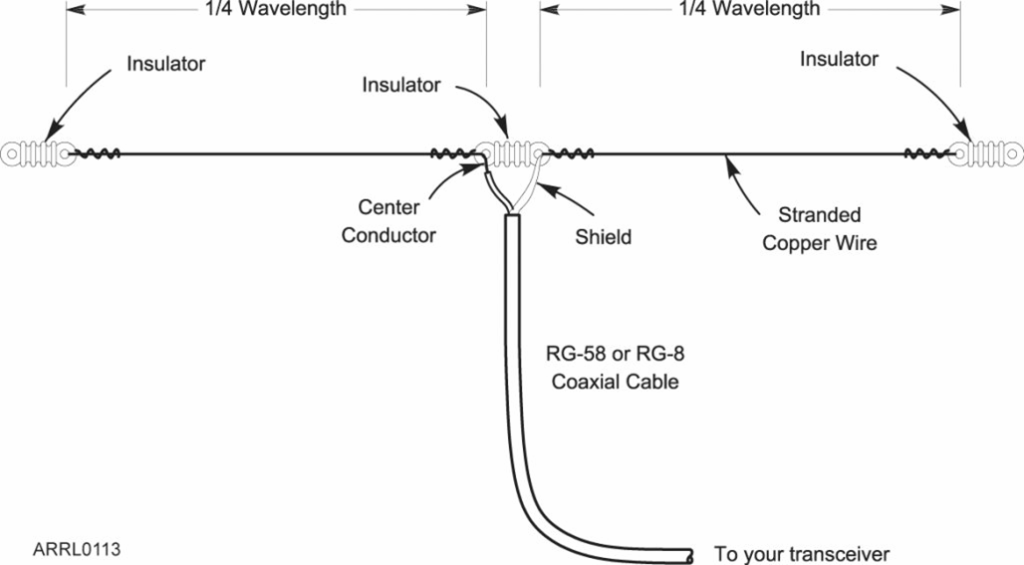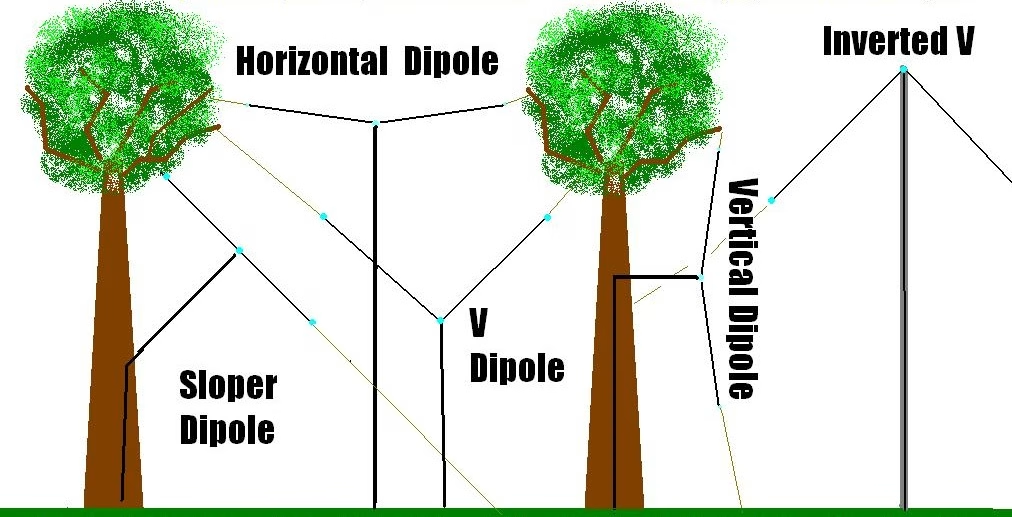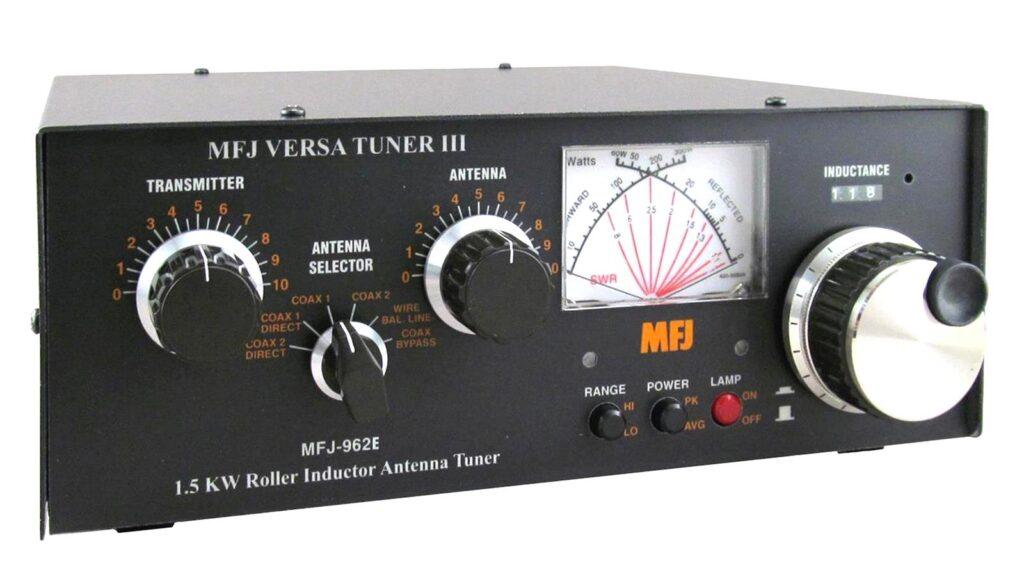Last updated on 2025-11-07 at 11:37 EST (UTC-05:00)
Back to Basics: Practical Antennas and the Beauty of Simplicity
When I first started in electronics back in the mid-’80s, one of the first things I learned was that good design doesn’t always mean complex design. Nowhere is that truer than with antennas. Chapter 8B of the RAC Basic Certificate Course reminded me of something many of us tend to forget: the simplest antennas often work the best.
The Dipole: Still the Benchmark

image: Amateur Radio Relay League
The humble half-wave dipole remains the antenna most of us start with, and for good reason. It’s efficient, easy to build, and often outperforms multi-band “miracle” antennas that promise everything but deliver little. A properly tuned dipole radiates most of its energy broadside to the wire, and with a bit of forethought about orientation, it can even be aimed toward the area where you want to make the most contacts.
One thing worth remembering is that theory doesn’t always match practice. The textbook half-wave formula—150 divided by the frequency in MHz—doesn’t quite work out in the real world. Wire thickness, insulation, and end effects all play their part, which is why the RAC course recommends trimming by testing rather than solely by calculation.
Variants That Make Sense
As hams, we love to tinker, and the dipole has inspired countless variations: the fan dipole for multi-band operation, the inverted-V for limited space, and the folded dipole for better impedance matching and broader bandwidth. Each one adapts the same principle to a different need, trading gain, bandwidth, or size depending on your situation.

For portable or stealth operations, end-fed half-wave antennas (EFHW) are a great option. They’re light, fast to deploy, and can operate efficiently on multiple bands using a broadband transformer at the feedpoint. They’re not perfect—impedance matching and grounding matter—but they’re ideal when “up and on the air” beats “perfect and still on the bench.”

Going Vertical
For those with more vertical real estate than horizontal, monopoles and verticals provide another elegant solution. A quarter-wave vertical fed against a decent ground plane can work wonders for DX, thanks to its low angle of radiation. Extend that to a five-eighths-wave radiator, and you’ll squeeze out a few more dB of gain toward the horizon—just enough to make a contact you might have missed otherwise.
That said, verticals are honest antennas—they’ll give you only what you put into them. Poor grounding or a bad radial system will rob you of performance faster than any mismatch in the feedline.
From Beams to Rhombics
At the other end of the spectrum are directional antennas—Yagis, quads, log periodics, and even rhombics—that focus energy where it’s needed most. Each offers a mix of gain, bandwidth, and complexity, but the underlying physics never change. Whether you’re using a three-element Yagi or a multi-bay Sterba curtain array, you’re still working with interference patterns, phasing, and reflections. The art lies in balancing performance with practicality.

I found it fascinating that a rhombic, despite its size and reputation, doesn’t actually outperform a modest three-element Yagi on the same band. But what it lacks in efficiency, it makes up for in bandwidth and simplicity—a perfect example of engineering trade-offs.
Antenna Tuners: The Unsung Heroes
No discussion of practical antennas is complete without the antenna tuner—or, more appropriately, the impedance-matching network. Despite the name, a tuner doesn’t actually tune the antenna; it simply makes the transmitter “happy” by matching impedances so that maximum power is delivered to the system. It’s one of those unsung devices that can make the difference between frustration and flawless operation.

Closing Thoughts
After decades working in engineering safety and control systems, I still love how radio brings me back to fundamentals—resonance, reflection, impedance, and the magic of radiation. Building antennas reminds me that even in our AI-driven, software-defined world, some of the most elegant solutions are still just lengths of wire, properly arranged.
Sometimes, the best antenna isn’t the most complex one—it’s the one you built, tuned, and learned from.
References
[1] A. Penney, Practical Antennas – RAC Basic Certificate Course, Chapter 8B, Radio Amateurs of/du Canada.
[2] “Antenna tuner,” Wikipedia, 2025. [Online]. Available: https://en.wikipedia.org/wiki/Antenna_tuner.
[3] “Yagi–Uda antenna,” Wikipedia, 2025. [Online]. Available: https://en.wikipedia.org/wiki/Yagi–Uda_antenna.
[4] u/SUR-VON-DOE, ‘EFHW Antenna Configurations’, reddit.com/r/HamRadio. Accessed: Oct. 26, 2025. [Online]. Available: https://www.reddit.com/r/HamRadio/comments/svu4u3/efhw_antenna_configurations/
[5] R. Y, ‘What is Rhombic Antenna? Construction, Working, Radiation Pattern and Applications of Rhombic Antenna’, Electronics Desk. Accessed: Oct. 26, 2025. [Online]. Available: https://electronicsdesk.com/rhombic-antenna.html
[6] ‘MFJ 962E Versa Tuner III Antenna Tuners’, DX Engineering. Accessed: Oct. 26, 2025. [Online]. Available: https://www.dxengineering.com/parts/mfj-962e


Leave a Reply